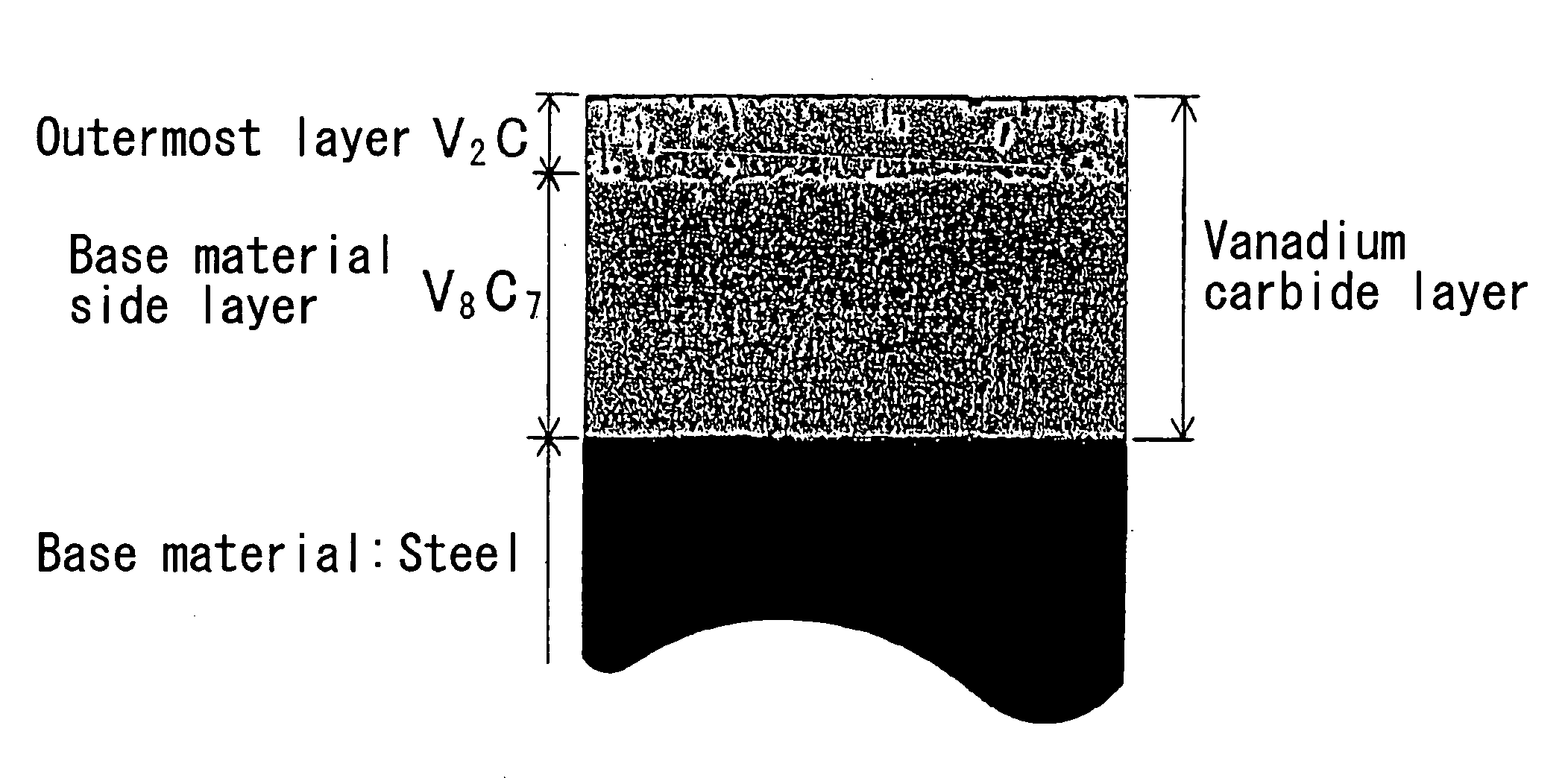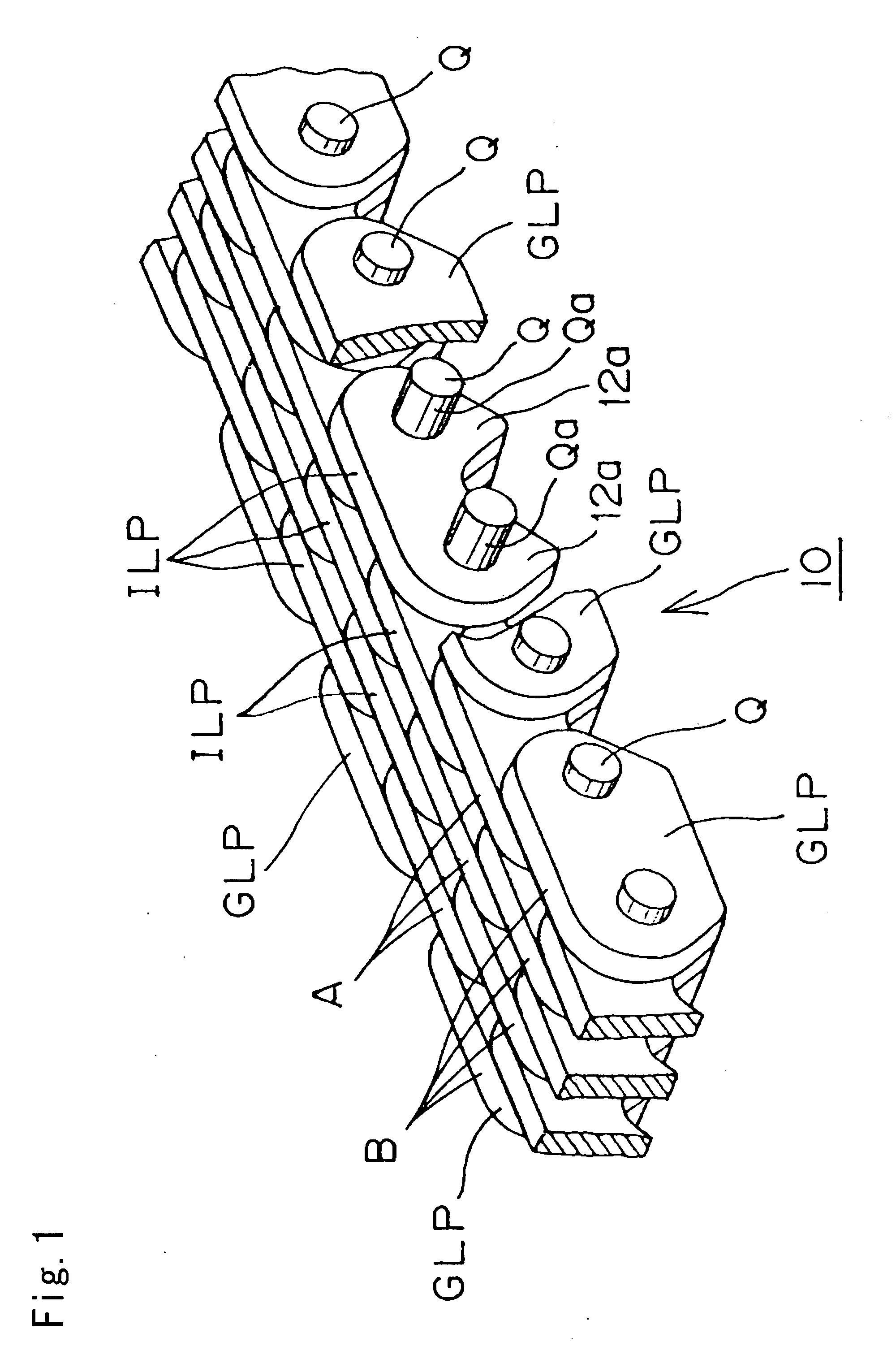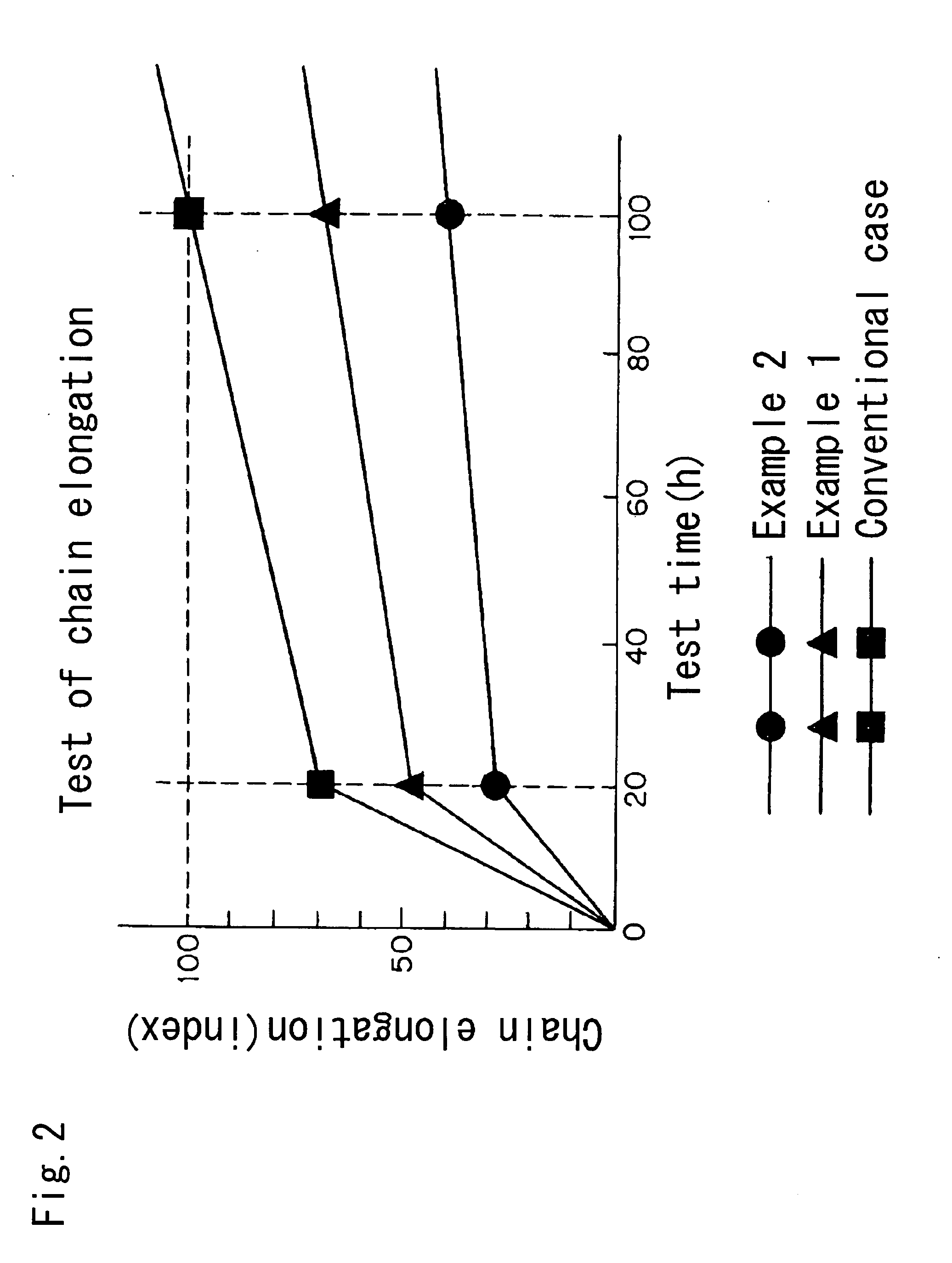Chain for use in automobile engine
a technology for transmission chains and automobile engines, applied in driving chains, solid-state diffusion coatings, gearing, etc., to achieve the effects of reducing the surface roughness of pins, reducing the ten-point mean surface roughness (rz), and high hardness
- Summary
- Abstract
- Description
- Claims
- Application Information
AI Technical Summary
Benefits of technology
Problems solved by technology
Method used
Image
Examples
Embodiment Construction
[0022]Although the invention will be described with reference to a silent chain, it should be understood that similar effects can be achieved in a roller chain and also in a rollerless bushing chain. In the case of a silent chain, the connecting pins are in sliding contact with the inner walls of the pin holes in the link plates of the chain. In the case of a roller chain or a rollerless bushing chain, the connecting pins are in sliding contact with the inner walls of the bushings. In all of these kinds of transmission chains, the invention can prevent deterioration due to sliding contact between the connecting pins and their opposed surfaces, especially in a deteriorated lubricating oil environment.
[0023]In FIG. 1, two guide link plates GLP are partly cut away to show a link plate having a pair of teeth 12a. The silent chain 10 is an endless chain formed by interleaved rows of link plates interconnected by pins Q. Each row comprises a plurality of inner link plates ILP, and every s...
PUM
| Property | Measurement | Unit |
|---|---|---|
| Fraction | aaaaa | aaaaa |
| Surface roughness | aaaaa | aaaaa |
Abstract
Description
Claims
Application Information
 Login to View More
Login to View More - R&D
- Intellectual Property
- Life Sciences
- Materials
- Tech Scout
- Unparalleled Data Quality
- Higher Quality Content
- 60% Fewer Hallucinations
Browse by: Latest US Patents, China's latest patents, Technical Efficacy Thesaurus, Application Domain, Technology Topic, Popular Technical Reports.
© 2025 PatSnap. All rights reserved.Legal|Privacy policy|Modern Slavery Act Transparency Statement|Sitemap|About US| Contact US: help@patsnap.com



